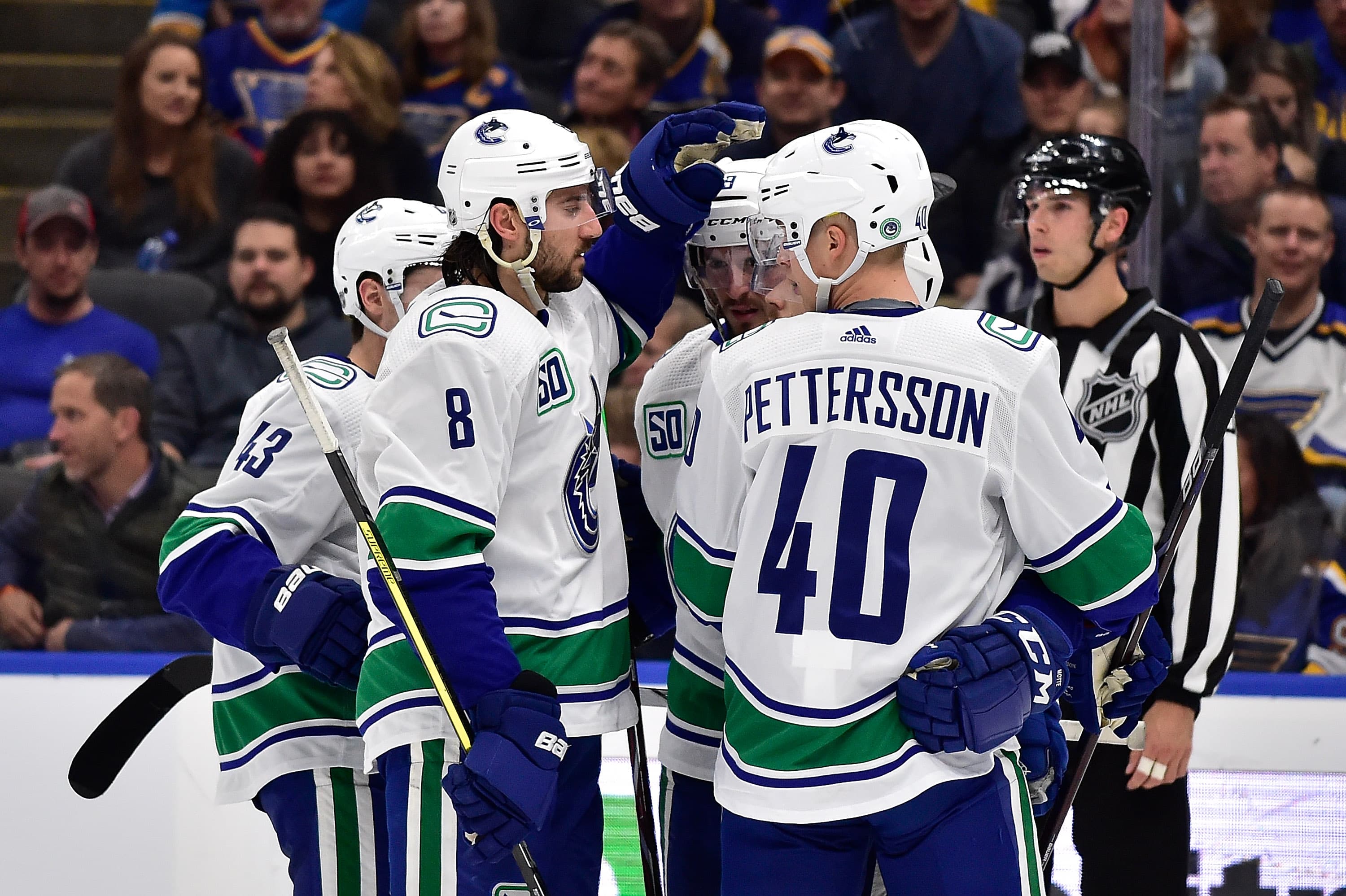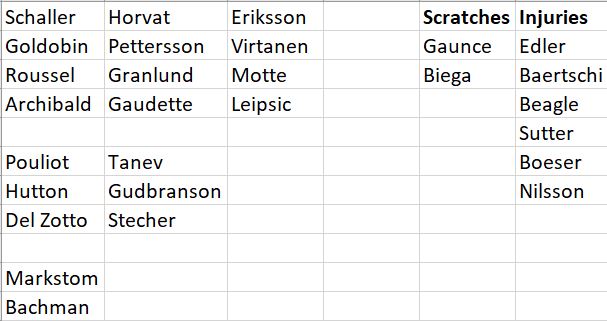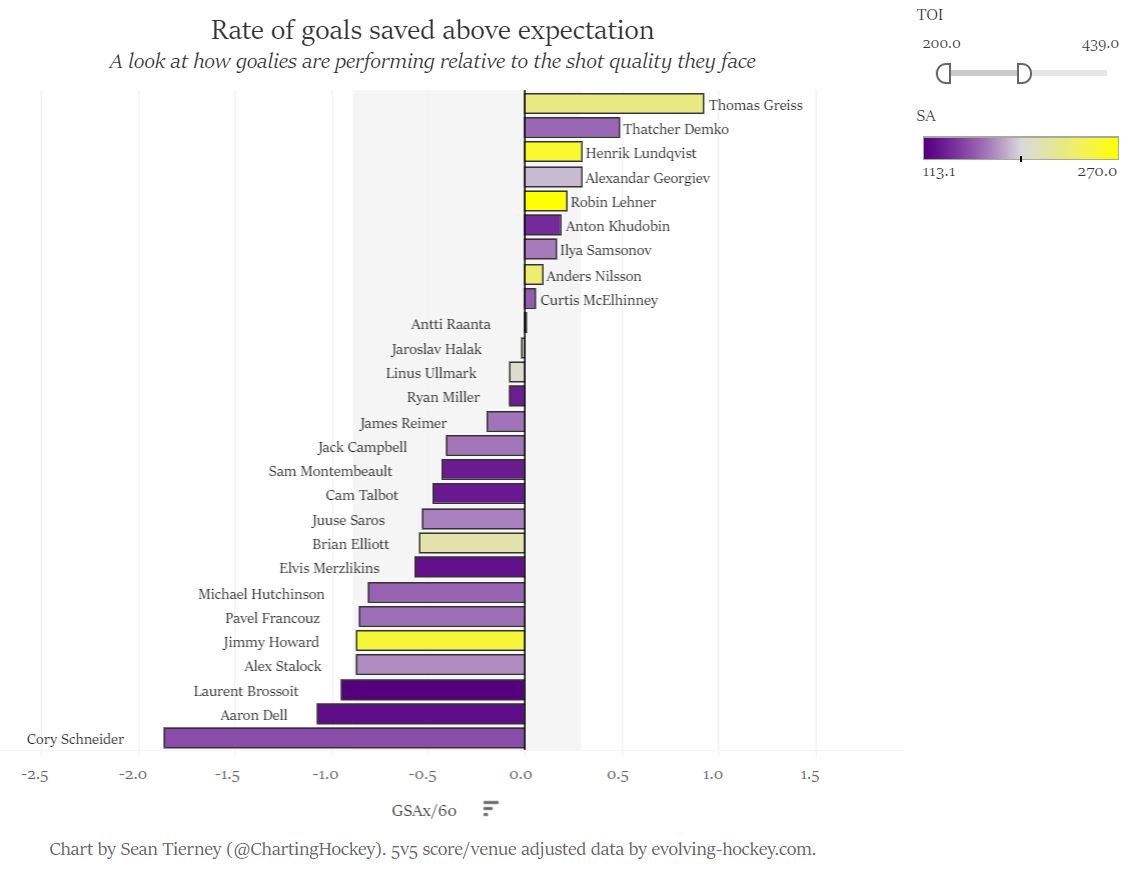Are the Canucks any better than they were last year?

Dan Murphy asked an important question during the intermission during Tuesday night’s game against Nashville: Given the team’s similar record after the same amount of games this season compared to last, are they actually any better?
It’s a reasonable question that, because of its timing, quickly became a talking point in this market. Murphy raised the question as the Canucks were still battling the Predators in an effort to snap a four-game losing streak.
It’s funny how quickly things can change. It doesn’t seem all that long ago that fans were buzzing about the team’s potential, with talk of the team returning to the playoffs began to emerge as they flew out of the gate en route to a 9-3-2 record and the best win percentage in the Pacific. Then all of a sudden they dropped four straight, and discussion immediately turned to whether or not this team is really any better than they were last season.
At first glance, it’s not an unreasonable question to ponder. The team’s record through 19 games last season was 10-7-2, giving them 22 points and a 95 point pace. In comparison, this year they have a record of 10-6-3, giving them 23 points the same amount of games.
To properly determine how much the team has improved, if at all, we’ll have to compare how this team looks on paper and what results they’ve produced so far to where they were at at this time last year.
Roster Improvements
In their 19th game of last season, the Canucks sent out the following lineup against the Rangers.

It’s crazy to look at how different the lineup is, only 365 days later.
If we assume the relative health of both rosters, the 2019-20 Canucks come out with a significant advantage, with the biggest improvements coming on the back end.
So far, the addition of Tyler Myers has yielded better results than myself and many other critics of the signing expected. Myers and Edler have made a steady first pairing so far, which is surprising given the usual adjustment period players often need when playing under a new coach and system.
While we have seen some major gaffes from Myers resulting in scoring chances, it’s fair to say that he’s an improvement over many of the defencemen the team was trotting out last season. Obviously, it’s still early, though, and if last year reminded us of anything, it’s that 19 games make for a terribly small sample.
Jordie Benn hasn’t been quite as good as he can be, but he’s been steady enough in 3rd pairing minutes. Some have commented on how prone he is to go unnoticed in a game as a good thing, but I think the bar should be set a little higher. Benn is capable of more offense than he’s provided thus far and instead of him going unnoticed, I’d like to see him make more memorable positive impacts in games. That could come with more comfort.
At the end of the day, while Myers and Benn have shown some cracks at times, they’re still a massive step up from Derrick Pouliot, Ben Hutton, Erik Gudbranson and Michael Del Zotto.
A More Established Backup
Last season, Thatcher Demko started 9 games in total while Anders Nilsson started 12. This year Demko already has 7 starts and has performed above expectations. The improvement at the position has done wonders for the club’s long term outlook given how much uncertainty the Canucks’ had in net last season on any night when Jacob Markstrom wasn’t starting.
Demko has a firm grip on the position, posting a .931 SV% and a 2.13 GAA on his way to 5 wins in 7 games. More importantly, he’s behind only Thomas Greiss, currently the league’s hottest goaltender, in the rate of goals saved above average.

It’s been a nice breakout start for Demko, who’s making a case for best backup in the league. With Demko establishing himself, the team now has both a starter and a backup that give them a chance to win every night, which was not the case last season.
Adding Miller and Ferland
Up front, this year’s Canucks were able to add Miller and Ferland without subtracting from their lineup. There isn’t much more that needs to be said about Miller’s play, which in itself makes this forward group better, but if Ferland’s health can improve, his contributions would be another reason this group is better than the last.
Continued Development of Elias Pettersson
It also helps when the team’s MVP continues to improve, leading the team to do the same. While his offensive numbers are up, it’s on the defensive end where he’s really stepped up to prevent scoring chances.
He’s scoring at a pace that would see him finish with 98 points and shatter his previous total of 66 points. His Corsi share is up from 50.14% to 58.66% and his expected goal share is up from 47.40% to 60.50% all at 5 on 5. The biggest reason for the the improved share rates is his increase dedication to the defensive end. While the level of those rates may not be sustainable throughout the course of the season, it’s incredible to see the Canuck’s best player get that much better.
Pettersson leads by example and his confidence is contagious. He doesn’t just make his linemates better, but the team as well. To watch a sophomore teammate want to win as badly as he does makes it tough to be a passenger.
Underlying Numbers
The Canucks’ don’t just look like a better team based on the eye test. All the numbers, from special teams to the underlying data, suggest that they’ve taken a major step forward from where they were at a year ago.
| Through 19 Games | ||
| Via NaturalStatTrick.com | ||
| 2018-19 | 2019-20 | |
| xGF% | 44.62 | 54.15 |
| Corsi % | 47.04 | 52.55 |
| GF | 60 | 61 |
| GA | 62 | 49 |
| PP% | 18.3 | 25 |
| PK% | 80.3 | 83.3 |
Thanks to increased shot rates and stingier defensive play, this year’s team has done a better job of controlling the share of shot attempts and expected goals. Interestingly, their goals for total is nearly identical to what it where it was at this point last year. This probably reflects a lot more on how lucky the team was to score as many goals as they did last year than it does on the team’s ability to produce this year. Impressively, the real improvements have come on the defensive side of the game, where the team has allowed 13 less goals through their first 19 games than they did last season.
The improvement in special teams is also a significant reason this team is in a better spot a year later. A jump of nearly seven percentage points for their powerplay bumped them into the top 5. This is thanks in large part to the additions of J.T. Miller and Quinn Hughes, who have given fans a reason to get excited about how far the powerplay has come in terms of talent and execution.
While the team’s record may be similar to where it was at this point last year, it should be clear from looking at the roster and the improvements in their underlying numbers that the team has taken some significant strides this season, and that their success is more sustainable. Anyone who paid attention to the 2018-19 Canucks could tell that team was playing above their heads early in the season, and while it’s still early, this team has played at or near the level of their competition so far
Last year’s record serves as an important reminder that it’s still early, and a lot can change over the course of a full season, but now, fans have a right to be excited. The win totals may be similar, but the manner in which the team has earned those wins has changed for the better and has much better chance of holding up over the course of a full season.
Recent articles from Michael Wagar





